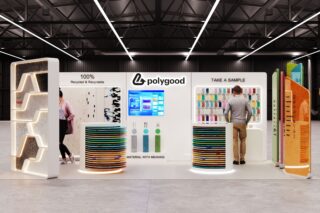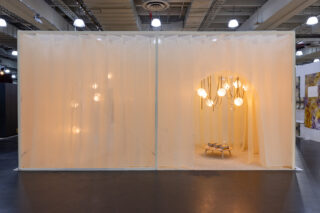The ability to draw by hand—both to create precise technical drawings and more expressive sketches—has underpinned the architectural profession for centuries. Yet the advent of the digital age and the pervasiveness of design software has seen the role and relevance of hand drawing in architecture increasingly questioned.
It was against this backdrop that the Drawing Futures Conference was held at University College London’s Bartlett School of Architecture on November 11 and 12, 2016. After her keynote conference speech entitled “What’s the Difference”—discussing the speculative and exploratory possibilities of drawing in architecture—ArchiExpo caught up with leading American architect Hsinming Fung to discuss the salient points of her presentation.
ArchiExpo: Can drawing by hand allow architects to explore ideas in ways that digital software can’t?
Hsinming Fung: Drawing by hand is a link to intellectual and emotional resources that are much more elusive in the digital realm. This is partly because the “sketch” is an evocative medium that allows the architect to rapidly appreciate its relevance, while simultaneously encouraging a response. It allows the architect to rapidly explore and evaluate myriad options, without the burden of overly explicit dimensions, geometries or preconceived configurations. Conversely, digital software can rapidly delineate an idea that has just been formed, so in my mind, the two create a very productive balance.
Controlling lineweights on drawings with Ryan Luke Johns. Ryan has created a software that allows for variable lineweights #draw16 pic.twitter.com/PIGsjkznIH
— Bartlett Arch UCL (@BartlettArchUCL) 12 novembre 2016
ArchiExpo: How often do you sketch concepts by hand? Do you know any highly talented architects who can’t draw?
Hsinming Fung: Initial explorations are almost always communicated to our team by sketches, or even whiteboard discussions. The development of graphic representations in digital form is extremely difficult without a constant stream of helpful suggestions, generally in sketch form. Those very talented architects whose work I know personally are obsessed with drawing. I’m not familiar with anyone who doesn’t communicate primarily without drawing.
ArchiExpo: Is there a distinction to be made between the usefulness of technical drawings and sketches?
Hsinming Fung: There I think you’ve put your finger on it. Technical drawings, which must communicate dimensions, detailed relationships that faithfully represent the materials and methods governing construction, and drawings to explicate custom configurations meant to guide tools—such as water jets, robots or five-axis mills—have benefited enormously from digital methods. They can save architects a vast amount of time.
“Drawing is about intention as well as embodied action,” says Ray Lucas, whose workshops use tracing to reveal how gestures connect #draw16 pic.twitter.com/2s4uSaUjMc — Bartlett Arch UCL (@BartlettArchUCL) 12 novembre 2016
ArchiExpo: How do you see the role of drawing in architecture developing over the coming years?
Hsinming Fung: I believe it will continue to be valued as an artistic choice rather than as a genuine and profoundly rewarding tool. Already there is a dearth of students with the requisite interest or talent; to many, bent on a career in which the marketing of their architectural product is paramount, it must seem an anachronistic, even irrelevant skill. Yet I am optimistic about the evolution of drawing within the digital realm, and am confident it will remain a powerful way to conceptualize design.
“Every stroke of a drawing is a transaction between the hand, the eye & the imagination,” Hsinming Fung, keynote @DrawingFutures, 11-12 Nov. pic.twitter.com/odu44H9KYh
— Bartlett Arch UCL (@BartlettArchUCL) 27 octobre 2016
About the architect
Hsinming Fung is principal and co-founder of Hodgetts + Fung (HplusF), a California-based architectural studio founded in 1984. Specializing in the design of unique places for learning, cultural events and civic functions, HplusF’s award-winning projects include the redesign of the Hollywood Bowl, the Menlo-Atherton Performing Arts Centre, CalArts’ Wild Beast Pavilion, Jesuit High School Chapel and Nashville’s new Ascend Amphitheatre. Fung is Chief of Strategic Advancement and International/Special Programs at the Southern California Institute of Architecture, and has taught at Yale, Ohio State and Cal Poly Pomona.











